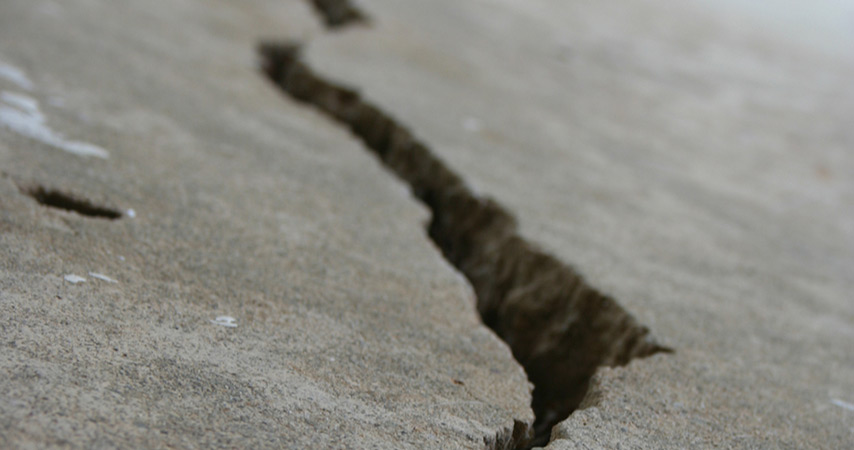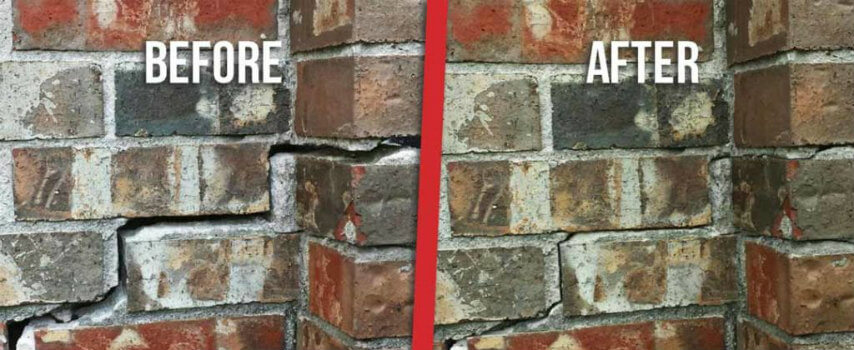Foundation cracks can be problematic for homeowners and property managers. Structural cracks in walls and ceilings can trigger thoughts of costly repairs and irreparable damage, but that’s not always the case. Before jumping to conclusions, you show at least learn the difference between structural and non-structural cracks in your foundation and surrounding structure.
Non-Structural vs. Structural Cracks in Your Foundation
Foundation stress cracks are not the only type of cracks in concrete slab foundations. In some instances, you might see seasonal cracks due to moisture and normal settling.
We are not structural engineers, but our foundation repair company in Houston has completed over a thousand successful projects. We understand the different signs of structural and non-structural cracks in concrete.
Non-Structural Cracks
Non-structural cracks in concrete aren’t a threat to the structural integrity of your structure, though they may appear in your foundation. Causes can include poorly constituted concrete when mixing (too much water in cement mixture), an uneven sub-grade when your foundation was laid, or suboptimal concrete curing.
Seasonal conditions bring moisture fluctuations that can cause non-structural cracks in your foundation. Thin hairline cracks (less than 3mm wide) can also appear from normal foundation settling or tree and plant roots that cause minimal damage. Learn more about the impact of weather on your foundation.
Continually monitor these cosmetic foundation cracks for any growth. In many cases, you can fill these with a foundation crack repair kit to improve their aesthetic.
Signs of Non-Structural Cracks
- Singular hairline cracks
- Cracks that measure less than 1/8”
- Ceiling-to-floor vertical cracks
- Cracks near door or window corners
- Plaster cracks
Structural Cracks
Structural cracks can occur due to foundation soil that is too wet or dry, poor soil bearing, and expansive voids under your concrete slab. This type of soil fluctuation is common in regions where clay is the predominant soil.
The landscaping around your house foundation can cause structural cracks if your grading encourages water retention under your structure. In addition, certain landscaping features like concrete patios can cause one side of your foundation to remain dry. Meanwhile, the other side retains moisture, leading to uneven soil movement and structural cracks. The list below will tell you what to look for and how to identify structural cracks.
Signs of Structural Cracks
- Suspicious cracks that measure 1/8″ or wider
- Cracks on foundation slabs or beams
- Gaping diagonal cracks
- Stair-step cracks alongside walls
- Several vertical cracks in a row
Structural foundation cracks are generally larger than 3mm and come in different shapes and sizes. One end of the crack may be wider than the other. The concrete on either side of the crack may be flush, or it could be uneven. A typical structural crack pattern is a stair-step crack in brick or cinder block walls.
Here’s how to know if a crack is structural: One of the easiest ‘tells’ for structural damage cracks is that they grow over time. A thin, non-structural crack can quickly become a structural foundation crack if it gets wider after several weeks or months. So, be on the lookout for these cracks that indicate structural problems!
Read this article about the signs of foundation issues if you want to know how to identify foundation cracks like a pro.
Solutions for Structural Cracks in Foundation
After considering whether you’ve got structural vs. non-structural cracks, you’ve noticed that your foundation crack is growing over time, and moisture is coming through. You’ve concluded that you should contact a professional – what foundation repair methods will they propose?
If you need further help evaluating structural and non-structural cracks, use URETEK Gulf Coast’s DIY foundation inspection checklist or contact us for a free estimate today!
Pressed Concrete Piling for Structural Cracks
Pressed pilings foundation repair is one of the most common solutions to fix structural damage. With this technique, concrete piles are driven into the ground far enough to reach a deeper and more consistent soil base using your home’s weight as a counter-force. Once the piles reach total resistance, your foundation can rest with limited shifting over the long term.
Foundation Foam Injection for Structural Cracks
Foam foundation repair uses The URETEK Method® to lift and stabilize interior foundations. Our long-lasting, structural-grade, hydro-insensitive, and environmentally inert foam is injected, and it expands to stabilize your soil base until proper lifting and leveling are achieved.
Learn more about The URETEK Method®
Contact URETEK Gulf Coast for High-Quality Foundation Repairs
Do you suspect you have structural cracks in the concrete of your home or commercial building? When you need a professional foundation repair in the Greater Houston area, trust URETEK Gulf Coast. We’ve completed over 1,000 projects over 20+ years in business. We provide lasting solutions and a competitive foundation repair warranty to put your mind at ease.


